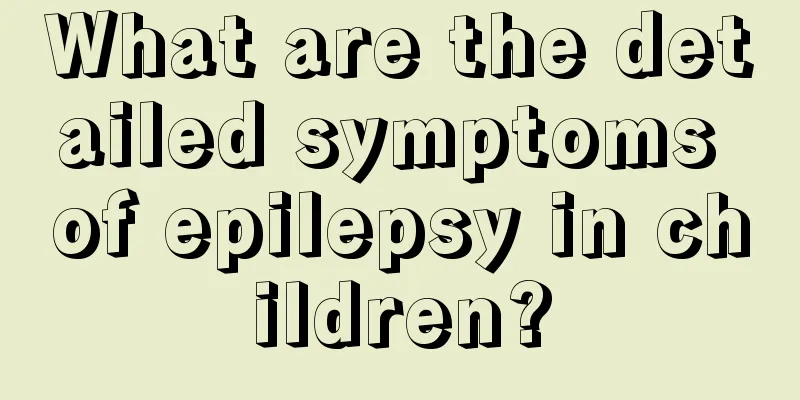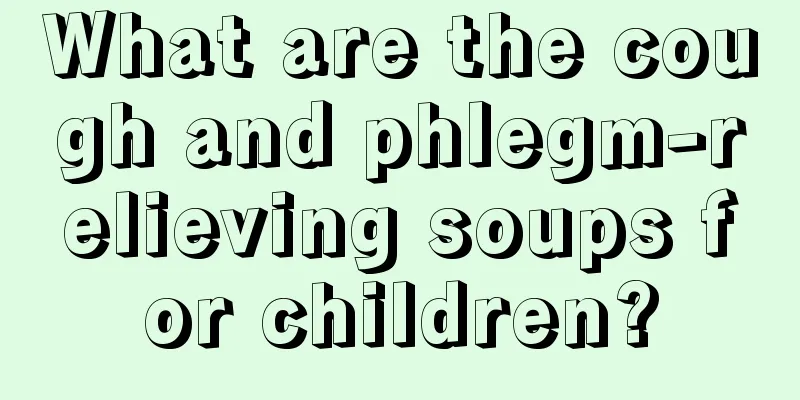What are the detailed symptoms of epilepsy in children?

|
Epilepsy is most likely to occur in children aged 0 to 18, so it is called childhood epilepsy. This disease has two major classifications in medicine, idiopathic and secondary. The cause of idiopathic epilepsy is still not fully understood, but it is mainly related to genetic factors. Secondary childhood epilepsy is generally caused by brain diseases. The following is a detailed introduction to the symptoms of childhood epilepsy. Detailed symptoms of epilepsy in children: 1. Benign familial neonatal seizures There is a family history of neonatal convulsions, which is idiopathic epilepsy. 80% of them will have convulsions 2 to 3 days after birth. The seizure type is generalized seizure. The prognosis is good, the psychomotor development is normal, and there is no secondary epilepsy. The control drugs can be phenobarbital and sodium valproate. 2. Benign idiopathic neonatal seizures Benign idiopathic neonatal seizures occur 1 to 7 days after birth, mostly with partial clonic or asphyxial seizures, and have a good prognosis. 3. Early-onset infantile epileptic encephalopathy (Ohtahara syndrome) The first attack occurs within 2 to 3 months after birth, usually within 1 month, and is mainly manifested by frequent convulsive attacks and burst-suppression EEG, with a poor prognosis. 4. Early-onset myoclonic encephalopathy It often occurs in the neonatal period, and the main manifestations are partial or segmental multiple myoclonus and some motor seizures. In the later stage, it may present as tonic spasm, and the EEG is mostly of burst suppression type. The disease is serious and the prognosis is poor. 5.WEST syndrome Also known as infantile spasms, the cause of the disease is not yet fully understood. More than 60% of children are symptomatic, and 40% are idiopathic. Symptomatic cases are most common in perinatal hypoxia, tuberous sclerosis, multiple neurofibromatosis, cerebral hypoplasia, Sturge-Weber syndrome, various perinatal brain injuries, and intracranial infection. 55% to 77% of children develop the disease within 3 to 7 months after birth. There was no significant difference in the incidence of gender. The disease is characterized by flexion-like infantile spasms, delayed psychomotor development, and EEG dysrhythmia. Generally, the disease gradually worsens after onset. Epileptic seizures are characterized by short tonic spasms, most notably in the flexor muscles, often with sudden flexion of the neck and waist, and may also involve the limbs. Each spasm lasts about 1 to 15 seconds and often occurs in clusters, with each cluster consisting of several or dozens of spasms. Cluster attacks are one of the characteristics of this disease. Symptomatic infantile spasms are often accompanied by other seizure types, such as atonic seizures, tonic seizures, atypical absence seizures, and partial seizures, and can also be seen in other epilepsy syndromes such as epileptic encephalopathy. 70% to 90% of children have developmental disorders and neurological signs before the onset of convulsions. Children who had previously developed normally have their psychomotor development retarded or even regressed after becoming ill. It manifests as weakened response to the surrounding environment, loss of active grasping ability, irritability, emotional indifference, low muscle tone, etc. High-grade arrhythmia is the typical EEG manifestation, which is irregular high-amplitude spikes and slow waves. Antiepileptic drug treatment is ineffective. You can try nitrazepam, clonazepam, valproic acid, ACTH, hormones and ketogenic diet treatment, and vagus nerve stimulation has a certain effect. The prognosis of infantile spasms depends mainly on the cause. Symptomatic (secondary) spasms can be cured surgically. Idiopathic or inoperable symptomatic cases have a poor long-term prognosis. More than 90% of patients have varying degrees of psychomotor retardation. Many children develop other seizure types in later childhood and may develop Lennox-Gastaut syndrome. 6. Benign myoclonic epilepsy of infancy The disease usually occurs at an age of 1 to 2 years old, and there is often a family history of convulsions or epilepsy. The clinical feature is brief generalized myoclonic seizures without other types of seizures. During the attack, the electroencephalogram shows widespread spike and slow waves, which are mostly synchronous on both sides. The intervals between attacks are normal. Should be treated early. 7. Dravet syndrome Also known as severe myoclonic epilepsy in infancy (SMEI), the overall incidence is about 1/20,000 to 40,000, with a male:female ratio of about 2:1, accounting for about 29.5% of all types of myoclonic epilepsy in children and 7% of epilepsy in infants and young children under 3 years old. Dravet syndrome can cause a severe epileptic encephalopathy. It is characterized by early onset age, complex seizure forms, high seizure frequency, severe intellectual impairment, low efficacy of drug treatment, poor prognosis and high mortality rate. It is also a representative of intractable epilepsy. This disease is a drug-refractory epilepsy with a poor prognosis. |
<<: Symptoms of teething in 2-year-old babies
>>: Symptoms and signs of iron deficiency in newborns
Recommend
What to do if your newborn baby has water discharge from his belly button
If a newborn has water flowing out of the belly b...
Is it Tourette syndrome if my child always sniffs his nose?
A child is like a blank piece of paper. He will l...
How to remove red birthmarks on baby’s eyelids?
When a baby is just born, a small red birthmark m...
What happens if your baby has high jaundice?
Every newborn will have symptoms of jaundice. The...
What to do if your one-year-old baby has thrush
If a one-year-old baby has thrush, you should pay...
How many years should children with purpura nephritis be treated?
Purpura is a disease that is quite harmful to the...
Why do children often have stomachaches?
Stomachache is a common disease in people's l...
Why do children sweat when they sleep?
If a child sweats while sleeping, he is not only ...
Methods to enhance children's immunity
In fact, people's lives are quite busy nowada...
What causes a child's nosebleed?
It is quite worrying when a child has a nosebleed...
What to do if your child loves biting his lower lip
As children's bodies continue to grow and the...
How to treat and care for cough and asthma pneumonia in children?
In daily life, we often hear parents say that the...
What is the effect of drinking glucose for babies?
Glucose is the most widely distributed monosaccha...
Do children need zinc supplements?
Zinc is a common trace element. It plays a relati...
What are the symptoms of foreskin being too long in children?
If a child has severe foreskin, many symptoms wil...









